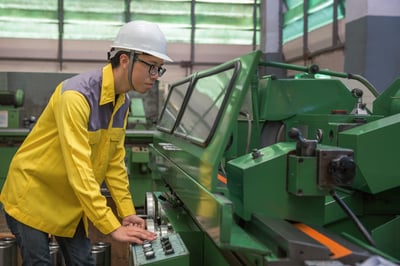 In the business management context, continuous improvement means a never-ending effort to identify and eliminate the root causes of problems that produce errors or diminish customer value. Most often, it consists of many incremental improvements rather than one drastic change. Continuous improvement is an integral part of Japanese culture, which endeavors to improve on an ongoing basis. In Japan, improvement involves everyone, including management and labor, in finding and eliminating waste in materials, labor, machinery, and production methods.
In the business management context, continuous improvement means a never-ending effort to identify and eliminate the root causes of problems that produce errors or diminish customer value. Most often, it consists of many incremental improvements rather than one drastic change. Continuous improvement is an integral part of Japanese culture, which endeavors to improve on an ongoing basis. In Japan, improvement involves everyone, including management and labor, in finding and eliminating waste in materials, labor, machinery, and production methods.
The Japanese word Kaizen is often used interchangeably with the idea of continuous improvement. The Japanese character kai means change, and the character zen means good. Thus, Kaizen is good change.
Even though Kaizen is a Japanese idea, many companies in the US have implemented it with great success by joining the best of traditional Japanese management practices with the strengths of Western businesses. By combining the benefits of teamwork with the individual's creativity, the best of both worlds results. Kaizen is closely associated with lean manufacturing in the West because continuous improvement combined with just-in-time manufacturing principles form the foundation of lean.
The History of Continuous Improvement in Japan
After World War II, the United States wanted to encourage Japan to rebuild. General MacArthur asked several leading experts from the US to visit Japan and advise them on how to ignite the rebuilding process. One of these experts was Dr. W. Edward Deming. Dr. Deming was a statistician who had been engaged in census work. His goal in Japan was to set up a census. While here, he honed in on some of the challenges being experienced by the newly emerging industries. Many Japanese manufacturing companies faced massive difficulties, often lacking investment capital, raw materials, and components. On top of this, the morale of the nation and workforce was low. Based on his experience, Deming had some advice to give.
During the 1950's Dr. Deming visited Japan regularly. He helped Japanese businesses transition from a focus on results to one on processes. He taught leaders to concentrate the efforts of everyone on continuous improvement and rooting out imperfection at every point of the operation. Many Japanese manufacturers embraced Dr. Deming's advice, and by the 1970s, they were reaping the benefits. The most famous result is the Toyota Production System, which led to many business improvement practices used heavily in Japan, including just-in-time (JIT) manufacturing and Total Quality Management (TQM).
Although much of the foundation of the Japanese approach to continuous improvement originated in America, Western manufacturers showed little interest in operationalizing it until the late 1970s and early 80s. At that point, the success of Japanese manufacturing caused other organizations to take note and reassess their approach. Thus, Kaizen begins to emerge in the US along with increased use of TQM and JIT. Management consultants in the US generally use the term Kaizen to cover a wide range of improvement practices primarily regarded as Japanese.
The 4 Principles of Kaizen
The following principles provide the "How to" for Kaizen.
Every process can be improved. Kaizen thinking is based on the idea that even a process that produces acceptable outputs can be improved. Waste reduction is an excellent example. A process may have amazing results, but if it uses more resources than are needed to provide value to the customer, it should be a target for improvement.
Defects and process failures are usually the results of imperfect processes, not people. It is easy to blame people for problems, but closer inspection often reveals that problems were inevitable because the design of the process was flawed.
Every person in the organization must have a role in improvement. Kaizen is all about employee inclusion in improvement and problem-solving. The people closest to your customers, processes, and products are in the best position to identify opportunities for improvement.
Small changes can have a significant impact. It is not necessary to implement revolutionary change to improve. Instead, the Kaizen mentality is about noticing and resolving minor impediments on the path to perfection.
Other Japanese Quality Management Terms
While Kaizen is the most widely used Japanese continuous improvement concept, some other quality management and problem-solving ideas have made their way from Japan to the US.
Muri: One of the first things that plant managers engaging in improvement focus on is called Muri. Muri translates to "totally unreasonable." It happens when employees or machines are pushed past a reasonable limit that overburdens them and slows down rather than speeds up a process.
Mura: Mura roughly translates to "inconsistency." Mura happens when there is variation in a standard process. Manufacturers can address Mura by analyzing production and sales patterns to better anticipate customer demand and adjust production accordingly.
Muda: In English, Muda means "waste" or "wasteful activity." If an organization can reduce Muda, it can increase productivity and, therefore, profits. The Toyota Production System identifies seven types of waste including:
● Transport
● Inventory
● Motion
● Waiting
● Overproduction
● Over-processing
● Defects
Other organizations also include the waste of human potential.
Poka-Yoke: Another element of the Toyota Production System is Poka-Yoke which means creating error-proof processes. It is often a step built into the process to notify the operator of a problem that requires immediate corrective or preventative action.
Kata: Kata translates to "the form and order of doing things." Ideas about doing things in the correct and appropriate order are deeply entrenched in Japanese culture. Therefore, rather than jumping in to fix a problem with little information or insight, Kata encourages thinking before doing.
Gemba: The word Gemba means "the real place," in manufacturing, it typically refers to the shop or plant floor. In other industries, it might mean the office, the classroom, or the construction site. During a Gemba Walk, team members go to the place where work is done to show respect, ask questions, and observe processes in action.
Kanban: Kanban is a planning tool developed by Toyota to manage material replenishment in a just-in-time production environment. The term comes from the Japanese words for card and signal. Today it is used to visualize the movement of materials, information, and work in a multitude of environments.
Japanese continuous improvement ideas have resulted in great success for many US firms. Adopting the Kaizen mentality can have an enormous impact on the results of business processes of all sorts. With a focus on employee inclusion and problem-solving, even daunting challenges can be overcome.




Add a Comment